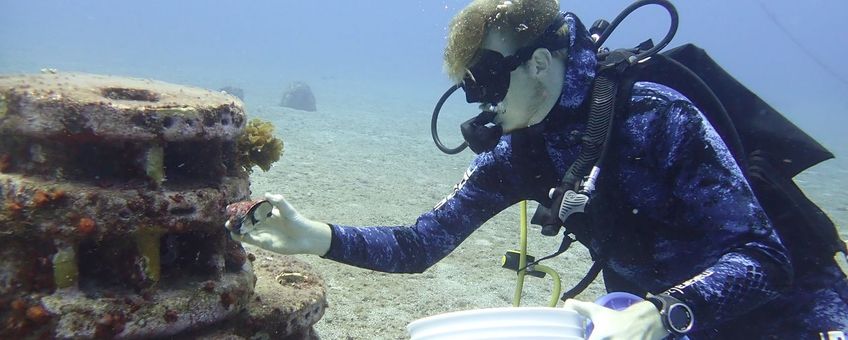
Saba’s plan for a coral comeback
Dutch Caribbean Nature Alliance (DCNA), Saba Conservation Foundation (SCF), Van Hall LarensteinThis initiative is centered around coral restoration, specifically reviving two essential coral species: staghorn coral (Acropora cervicornis) and elkhorn coral (Acropora palmata). By mapping parent colonies and using a technique known as coral gardening, Saba Conservation Foundation (SCF) will create and maintain coral nurseries. These corals will eventually be outplanted at key reef sites around Saba to not only expand the number of coral colonies, but also provide essential fish habitat. The project focusses on installing coral nurseries, training staff with the newest techniques, and starting with the restoration of key reef sites.
Reef cleaners to the rescue
It’s not just corals getting a makeover, this project also shines a spotlight on the essential role of grazers, particularly sea urchins. Van Hall Larenstein University of Applied Sciences is leading the charge on cultivating and restocking two key sea urchin species: the West Indian sea egg (Tripneustes ventricosus) and the long-spined sea urchin (Diadema antillarum), both known for their ability to keep algae in check. By removing algae, which are important competitors of corals, they help the corals to thrive. By restoring these 'reef cleaners', Saba’s project will give corals the breathing room they need to grow, setting the stage for a healthier, more balanced marine ecosystem.
From tiny sea urchins to big goals
The project will be funded as part of the Dutch Government’s Nature and Environment Policy Plan (NEPP) 2020-2030 for the Caribbean Netherlands, a comprehensive initiative aimed at conserving and restoring the unique natural environments of the Dutch Caribbean islands Saba, St. Eustatius, and Bonaire. This project is aiming for big milestones: building and maintaining coral nurseries, the expansion of urchin cultivation facilities, and the creation of a dedicated research center. By 2026, the project hopes to ramp up coral and grazer restoration, with the ultimate goal of extending these efforts across the Dutch Caribbean. By linking local initiatives to broader regional goals, Saba’s restoration project promises to leave a lasting impact on both the environment and the community.

Text: Dutch Caribbean Nature Alliance; Saba Conservation Foundation; Van Hall Larenstein University of Applied Sciences
Photo's: Alwin Hylkema (leadphoto: a researcher introducting a West Indian top shell (Crittarium pica) on an artificial reef)

